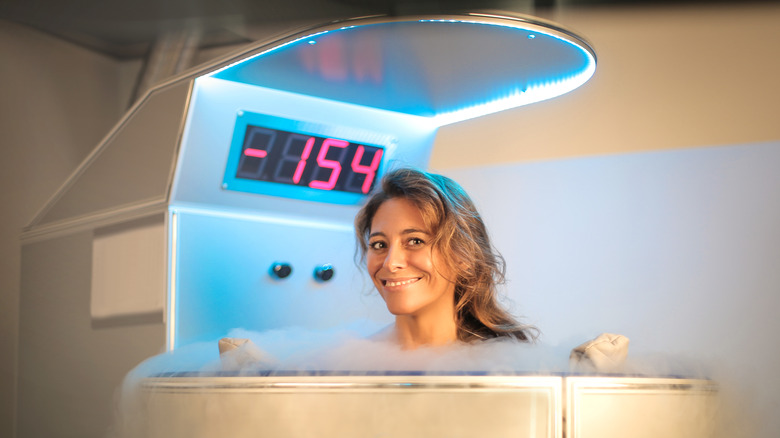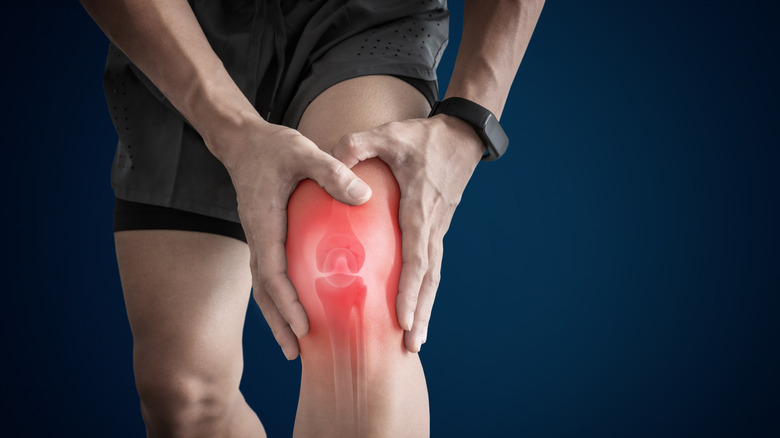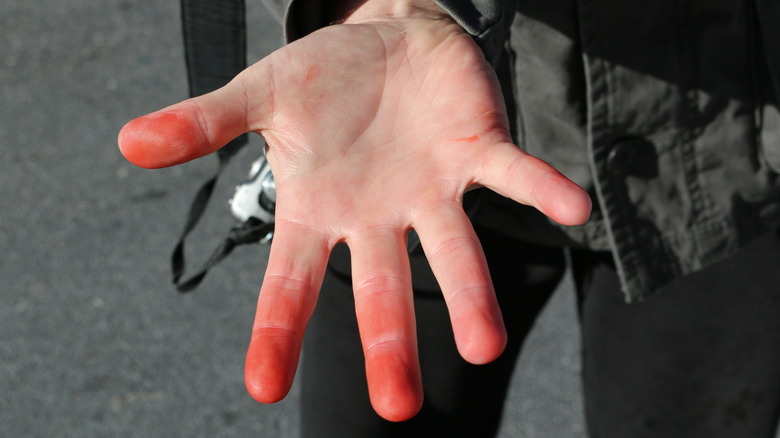Everything You Need To Know Before Trying Cryotherapy
Talk about the cold shoulder — a growing trend in health and wellness, from professional athletes to celebrities, is cryotherapy treatment. Cryotherapy literally means "cold therapy," and involves exposing the body to extremely cold temperatures for short periods of time (via Healthline). While ice baths are probably the most widely recognized form of cryotherapy, there are many ways to distribute it, whether it's for the whole body or for a specific area — there are ice massages, coolant sprays, and even probes that can be administered into tissue.
According to Web MD, there are split reactions between health professionals to cryotherapy. On one hand, there are numerous recorded benefits of cryotherapy including healthier and more youthful looking skin, faster injury recovery, and relief of arthritis. However, the FDA has still not approved cryotherapy, and it is discouraged by the American Academy of Dermatology. Keep reading to learn about the pros and cons of cryotherapy.
Benefits of cryotherapy
You probably recognize a familiar scene from any great sports movie — the star athlete submerged in an ice bath after the big game. But have you ever wondered what it actually does? According to Healthline, there are many benefits to cryotherapy that many people can enjoy, not just sports stars. One of the main benefits of cryotherapy is improved skin health, mainly with the condition of atopic dermatitis since cryotherapy is known to both increase antioxidant levels in the body and reduce inflammation. Cryotherapy has also been documented to aid in the treatment of arthritis; not only was it found to reduce pain, but it also allows for more comprehensive and rigorous physical therapy after the treatment.
Cryotherapy can also have effects on mental health, not just physical health. The extreme temperature change in cryotherapy has an effect on the body's hormonal responses, including the release of endorphins and adrenaline. This was shown to have positive effects on those suffering from anxiety and depression and was found to be an effective short-term treatment.
Risks and side effects of cryotherapy
As with any experimental treatment, there are risk factors and side effects to consider when trying cryotherapy, and the treatment may not be safe for everyone. There are a few obvious and pretty much universal side effects of cryotherapy, including redness of the skin, numbness, and tingling (via Healthline). These side effects are usually temporary, and should only cause concern if they're present for 24 hours or more.
However, there are more serious side effects and risks of cryotherapy that should be discussed with your healthcare provider before you decide on taking the plunge. One of the most common ones is frostbite, which can include blistering of the afflicted area, discoloration, pain, and irritation (via Web MD). According to Chris Juneau, DPT, who is a board-certified sports physical therapist at the Houston based Memorial Hermann Ironman Sports Medicine Institute, people who suffer from conditions that decrease sensation in the body, such as diabetic nerve pain and heart conditions, are at a particularly high risk for side effects from cryotherapy.


